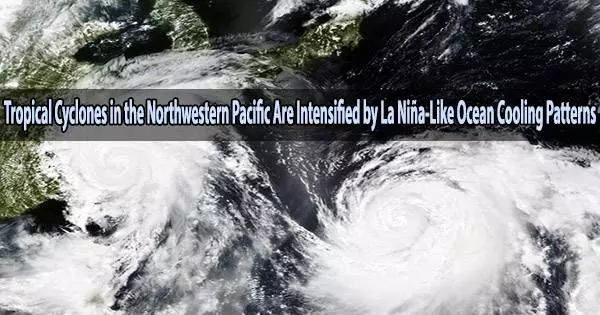In the northwest Pacific Ocean, strong tropical cyclones have become more frequent and intense as well as making more landfalls. This has led to questions about the underlying reason of the rise in devastating Category 4 and 5 storms.
The International Pacific Research Center (IPRC) at the University of Hawai’i at Mnoa has now published a study in Scientific Reports demonstrating a strong correlation between sea surface temperature patterns linked to the Global Warming Hiatus phenomenon and changes in cyclone activity over the northwest Pacific Ocean, particularly increasing intensities in coastal areas of East Asia.
Global temperatures have been rising steadily over time, albeit unevenly, as a result of climate change.
The rate of temperature growth appears to have decreased around the turn of the century, from 1998 to 2012, and this period has subsequently been dubbed the Global Warming Hiatus. While the tropical eastern Pacific Ocean cooled during this time, the Indian and tropical north Atlantic Oceans warmed.
Cooler sea surface temperatures in the eastern and central Pacific are typical characteristics of La Niña, which drives the westward movement of cyclones.
More Northwest Pacific tropical cyclones
According to Yuqing Wang, Jiuwei Zhao, and Ruifen Zhan of the IPRC, the northwestern Pacific Ocean had cyclonic (counter-clockwise) circulation during the hiatus, which favored the development and strengthening of cyclones there. These circumstances also boosted the number of storms that moved westward into East Asia’s coastline, increasing the frequency of these powerful storms making landfall.
Most previous studies have suggested that, with general global warming, the numbers of tropical cyclones over the northwest Pacific will decrease. Instead, over the last couple decades, more tropical cyclones formed and intensified over the far northwest Pacific. Our study shows this was due to increased local sea surface temperatures and reduced vertical wind shear associated with the hiatus conditions.
Yuqing Wang
Interestingly, local atmospheric circulation was anti-cyclonic (clockwise) in the southeast region of the northwest Pacific, which prevented the development and intensification of cyclones there.
Researchers from IPRC found a substantial association between hotter sea surface temperatures and the occurrence of powerful cyclones in the northwest Pacific Ocean along with these wind patterns.
This supports the assertion that the hiatus-induced changes in atmospheric circulation patterns and the distribution of sea surface temperature are directly responsible for the increased frequency of stronger cyclones over the past few decades.
“Most previous studies have suggested that, with general global warming, the numbers of tropical cyclones over the northwest Pacific will decrease. Instead, over the last couple decades, more tropical cyclones formed and intensified over the far northwest Pacific,” explained Wang. “Our study shows this was due to increased local sea surface temperatures and reduced vertical wind shear associated with the hiatus conditions.”
Even within an overall warming climate, Wang and his co-authors’ findings stress the need of acknowledging swings between warmer and cooler periods caused by natural climatic variability.





